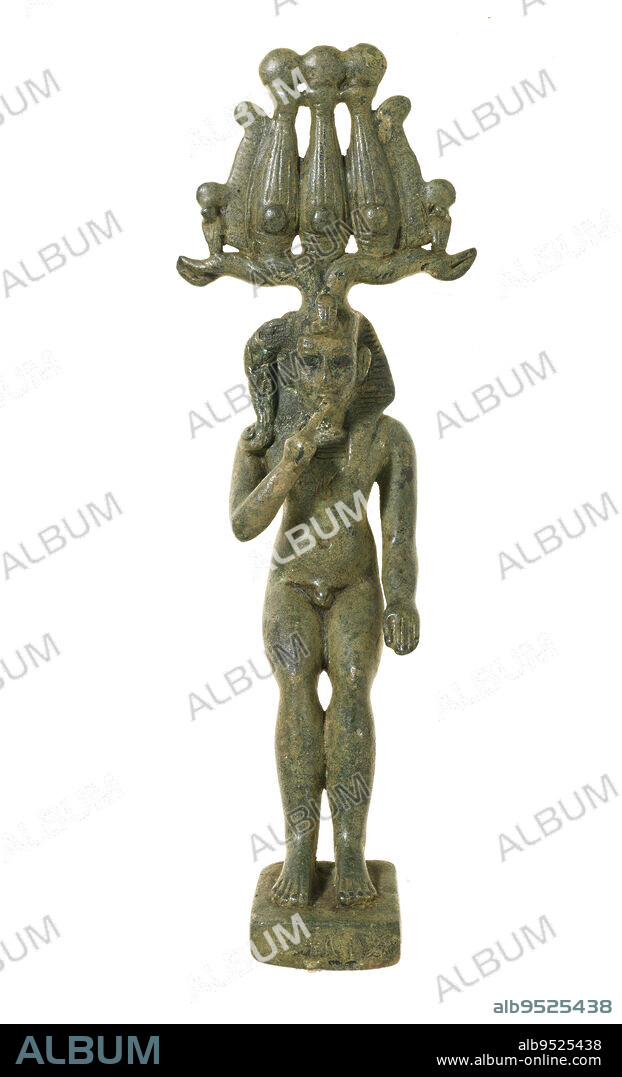alb9525438
God Horus (Harpocrates), 644-30 BCE, 6 1/4 x 2 9/16 in. (15.88 x 6.51 cm), Bronze with green patina, Egypt, 7th-1st century BCE, When the Greeks established dominion over ancient Egypt in 332 BCE, they adopted many of the Egyptian godsand renamed them. Their new name for the god Horus-the-Child was Harpocrates, and this depiction of him dates from that era of Greek rule, called the Hellenistic period. It shows typical markers of childhood, including the gods nudity, the side braid, and a finger in his mouth. As a matter of fact, the position of the hand to the lower lip or chin was the physical representation of the hieroglyph for 'child.'.

|
Añadir a otro lightbox |
|
Añadir a otro lightbox |



¿Ya tienes cuenta? Iniciar sesión
¿No tienes cuenta? Regístrate
Compra esta imagen

Descripción:
Ver traducción automática
God Horus (Harpocrates), 644-30 BCE, 6 1/4 x 2 9/16 in. (15.88 x 6.51 cm), Bronze with green patina, Egypt, 7th-1st century BCE, When the Greeks established dominion over ancient Egypt in 332 BCE, they adopted many of the Egyptian godsand renamed them. Their new name for the god Horus-the-Child was Harpocrates, and this depiction of him dates from that era of Greek rule, called the Hellenistic period. It shows typical markers of childhood, including the gods nudity, the side braid, and a finger in his mouth. As a matter of fact, the position of the hand to the lower lip or chin was the physical representation of the hieroglyph for 'child.'
Crédito:
Album / quintlox
Autorizaciones:
Modelo: No - Propiedad: No
¿Preguntas relacionadas con los derechos?
¿Preguntas relacionadas con los derechos?
Tamaño imagen:
3157 x 5198 px | 46.9 MB
Tamaño impresión:
26.7 x 44.0 cm | 10.5 x 17.3 in (300 dpi)
Palabras clave:
ANTIGUO EGIPTO • BOCA • BRONCE • BRONZE • DATES • DEDO • EGIPCIA • EGIPCIAS • EGIPCIO • EGIPTO • ERA • HARPOCRATES • HORUS • INFANCIA • MANO • OBRA DE BRONCE • PERIODO HELENISTICO • POSITION • TRENZA LATERAL
 Pinterest
Pinterest Twitter
Twitter Facebook
Facebook Copiar enlace
Copiar enlace Email
Email
